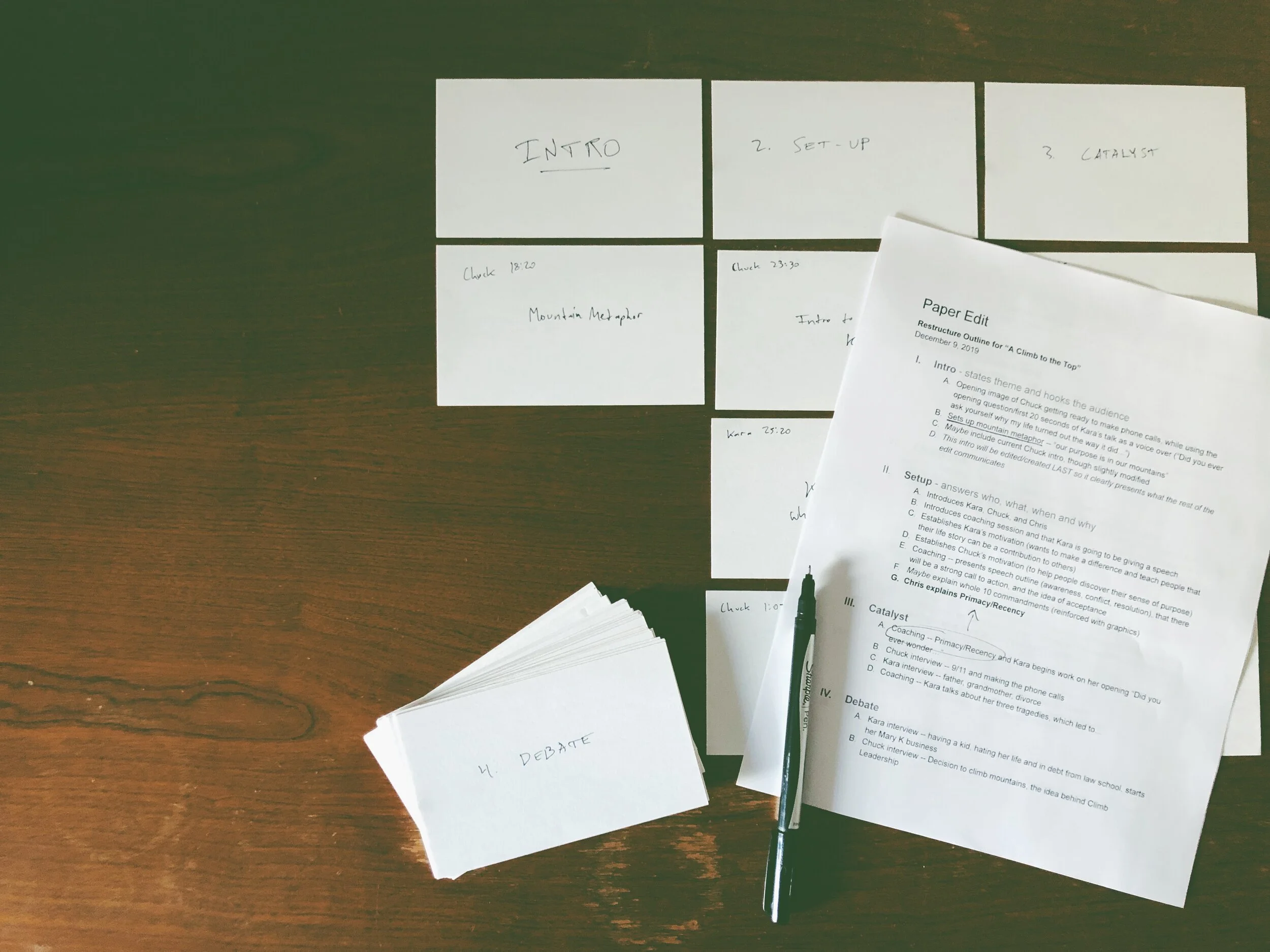Helping creators tell great stories.
Great storytelling is a process.
It requires continual adjustments, thoughtful problem solving, and collaboration.
As a writer and video editor, I dive into the nuts and bolts of storytelling to help filmmakers craft better films, fix stories that just aren’t working, and take final edits to the next level.
Story Design
Storytelling is a language. It requires structure in order to be properly understood.
Language is, of course, subjective. It evolves from time to time and is different culture to culture, but it always needs structure to it.
We call this syntax.
The same is true for story. Story also has syntax.
Scenes must be arranged in a certain way, otherwise people will say, “what’s the point of this?”
Bad storytelling is the equivalent of gibberish, and great storytelling is like poetry.
This is a picture of a notecard outline and paper edit I did for a reality TV show pilot.
With an emphasis on theme, I restructured an existing edit to fix some of the story problems the project was facing.
I’ve always thought language to be quite a mysterious and magical thing. When you deconstruct it you find that it is nothing more than a series of meaningless sounds we make, strung together in a way that suddenly takes on meaning. It is ex nihilo, creation out of nothing.
This is what I love about storytelling, the way disparate bits of information can be put together in such a way that something new is created (or as they say, “when the whole becomes greater than the sum of the parts”).
Storytelling is magic. It’s alchemy!
Sitting in the edit room with the client, having them watch through a new edit—though scary (what if they don’t like it?!)—is incredibly rewarding. You can feel the energy in the room shift as they find the story they thought they knew take on new meaning, new depth. It has reached a greater potential than they thought possible.
Like the end scene in that beautifully weird M. Night Shamalan movie Lady in the Water, Story spreads it’s wings and flies away.

